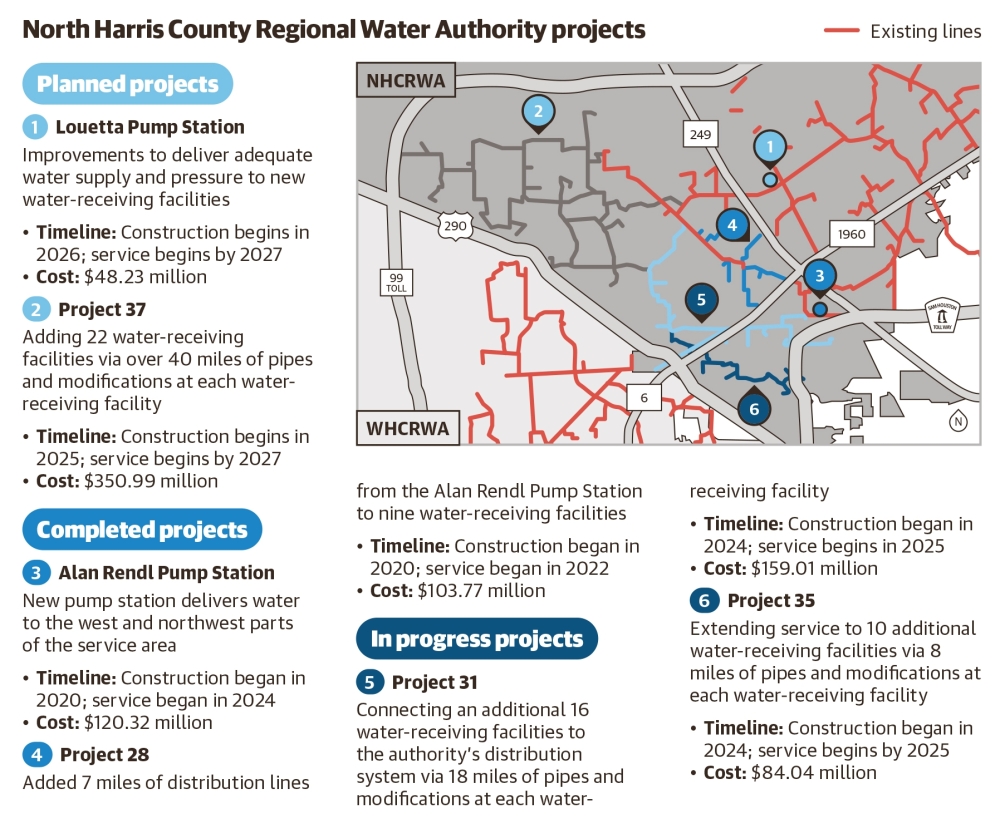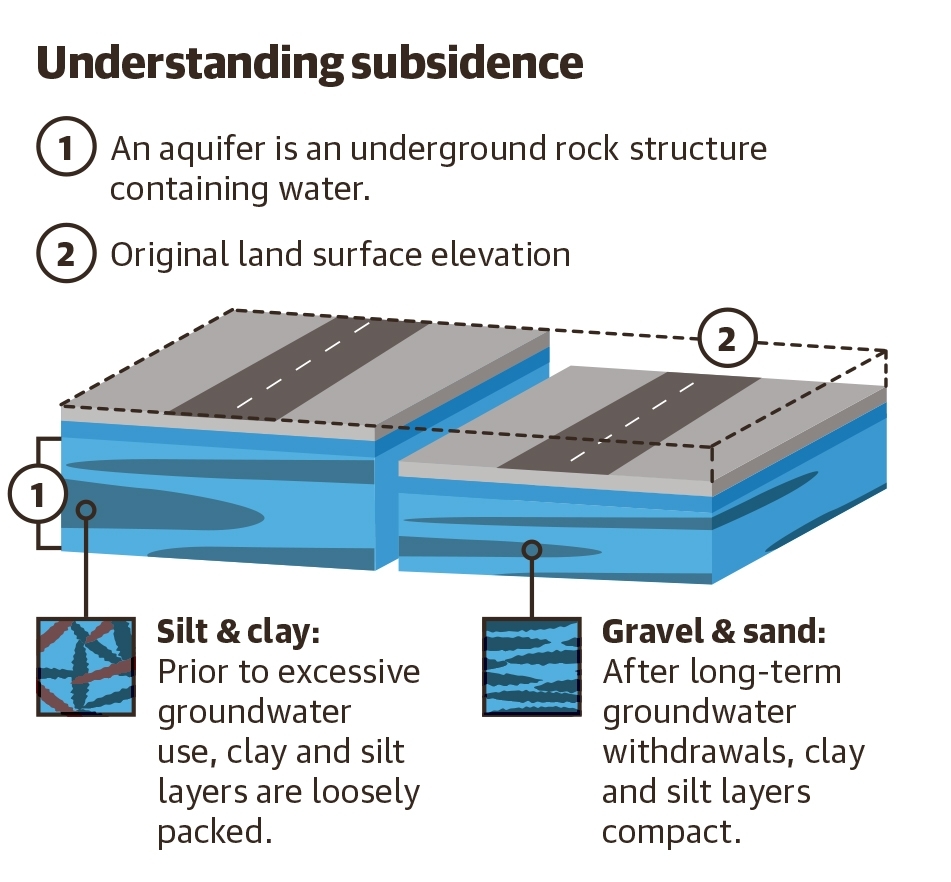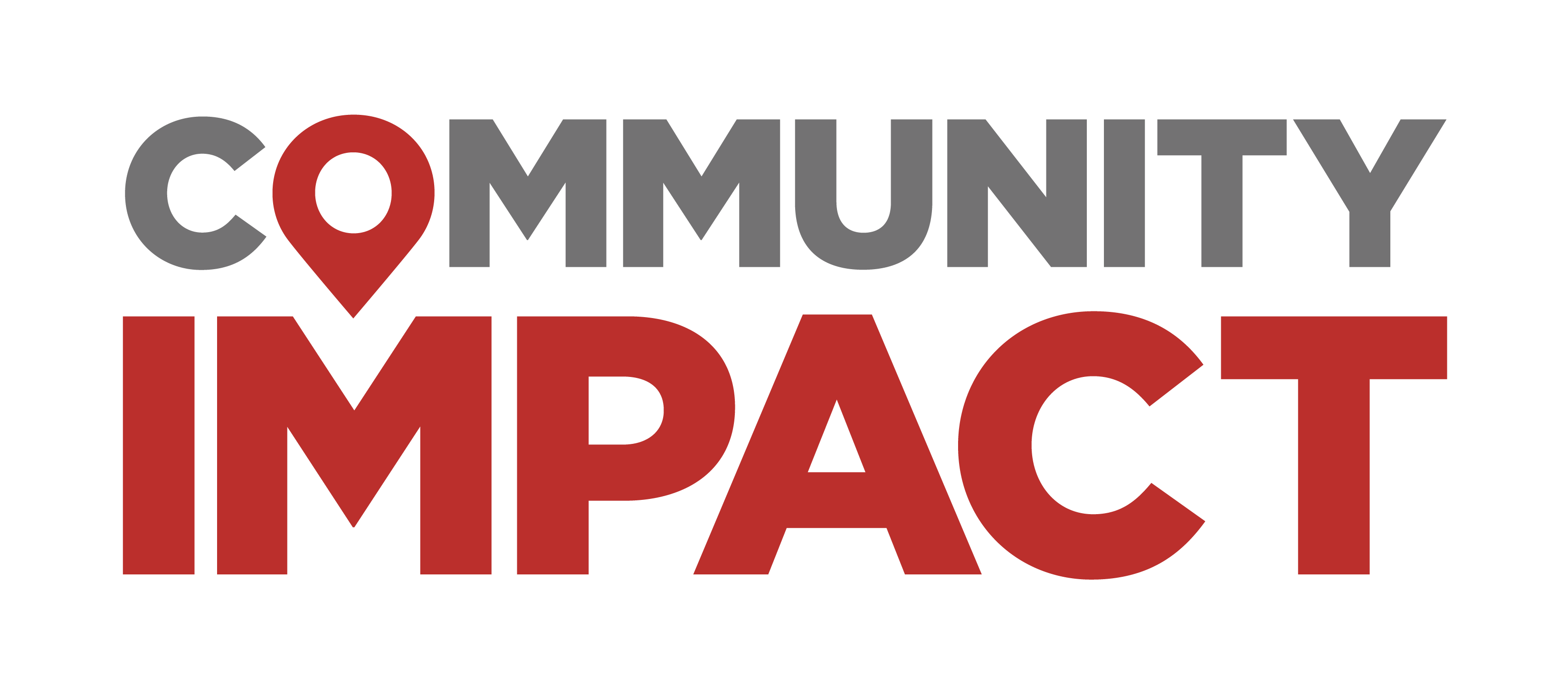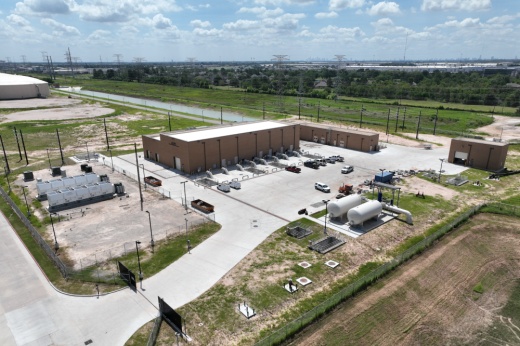Water authorities serving the Cy-Fair area are ramping up efforts to convert a larger portion of their water supply to surface water, aiming to reduce groundwater reliance and comply with Harris-Galveston Subsidence District regulations.
HGSD data from 2019-23 shows the Greater Houston area continues to experience subsidence, or the collapsing of the land due to movement beneath the earth’s surface. HGSD General Manager Mike Turco said the phenomenon is often caused by groundwater withdrawal.
Officials said northwest Harris County has seen increased subsidence over the last four years. To alleviate this, authorities must follow the HGSD’s plan and have 60% of their jurisdictions using surface water by the end of 2025 and 80% by 2035.
What’s happening
The North Harris County Regional Water Authority and the West Harris County Regional Water Authority are working on several projects to convert groundwater use to surface water use. Officials said about 32%-34% of the NHCRWA’s total water usage comes from surface water, compared to 35.64% for the WHCRWA.
NHCRWA General Manager Jun Chang said most of the authority’s projects for the 2025 surface water deadline focus on expanding water lines. Loops of water lines connect municipal utility districts to pump stations, and each loop expansion helps create a more interconnected internal distribution system.
“We are now in the process of completing the third loop [of the distribution system],” Chang said. “Eventually, we are going to go beyond the third loop to meet the required conversion percentage.”
Similar efforts are underway in the WHCRWA's jurisdiction as well as larger projects requiring collaboration. For instance, these two entities partnered with the city of Houston and other water authorities on the $1.97 billion Northeast Water Purification Plant expansion project. Located on Lake Houston, the project is expected to add 320 million gallons of treatment capacity to the water treatment plant, which serves areas across Harris County, including Cy-Fair.

Most projects are paid for through bonds, funds from state entities and co-funding agreements. Board member Mark Ramsey said the NHCRWA is $2.7 billion in debt, and it’s expected to climb to $7 billion in the next 10 years. He said he hopes the Texas Legislature can provide “regulatory relief” to avoid unsustainable water rates.
“We’re now headed toward $15 billion in cost with interest. ... We don’t have even $100 million of actual damage [from subsidence] identified,” Ramsey said. “Why are we doing this government-mandated project to fix something that may or may not actually be a problem?”
The background
Water rates customers pay correlate to how much debt is incurred from bonds issued for building water infrastructure, Chang said.
The WHCRWA’s water rates have steadily increased since 2015, but the NHCRWA’s rates are now at their lowest in a decade after the board cut rates over the past two years following the election of three new board members who unseated longtime incumbents in 2022.
While the cuts provide short-term relief for water users, Chang said a financial adviser estimated they could only last another six months before an increase is likely. The NHCRWA could see rates exceed $8 per 1,000 gallons by 2032.
The WHCRWA has not increased its rates since January 2023.
“For the past twenty years, the WHCRWA has engaged an independent third-party rate analyst to thoroughly review and recommend its water rates. Comprehensive rate studies conducted in 2023 and 2024 continue to confirm that WHCRWA fees are expected to remain close to current levels in the foreseeable future,” WHCRWA officials said in a statement.
What it means
Turco described subsidence as the gradual sinking of land caused by the extraction of fluids from an aquifer system. As groundwater is pumped out, the water levels within the aquifer decline, causing the clay layers in the aquifer to depressurize and compact.

The impact
Population growth and water demand can impact subsidence, which can lead to more flooding, permanent land loss and infrastructure damage, Turco said.
Ault Elementary School in the Fairfield neighborhood has one of the highest subsidence rates locally. Since measuring began there in 2015, it has experienced 8.7 total centimeters of displacement. In Fairfield Village South, the subsidence rate was only 0.59 centimeters per year, but the area saw 15 total centimeters of displacement since 2011.
The 77433 ZIP code in the western portion of Cypress contains locations with the highest and lowest annual subsidence rates over the past four years. This area has also seen the largest population increase among subsidence hot spots in Cy-Fair since 2018 with 29,954 new residents in that time, according to five-year estimates from the U.S. Census Bureau’s American Community Survey.
Subsidence measured at local monitoring stations include:
- Ault Elementary School: 8.7 cm since 2015
- Kirk Elementary School: 9.4 cm since 2015
- Cypress Falls High School: 12.5 cm since 2015
- Jarvis Road and Barker Cypress Road: 34.4 cm since 2000
- FM 529 and Barker Cypress Road: 20.1 cm since 2007
- Fairfield Village South neighborhood: 15 cm since 2011
- Jersey Village High School: 7.9 cm since 2015
State Rep. Tom Oliverson, R-Cypress, filed House Bill 1643 on Dec. 17 to reduce the HGSD’s authority over the NHCRWA.
The bill aims to:
- Remove the NHCRWA from the HGSD’s jurisdiction
- Exempt the entity from groundwater reduction requirements
- Let the NHCRWA set their own timelines for transitioning to surface water use
“If we don’t get regulatory relief and we don’t get funding from other sources, that will drive [water rates] to $15, maybe $20 per 1,000 gallons, which is obviously an unsustainable number,” Ramsey said.





